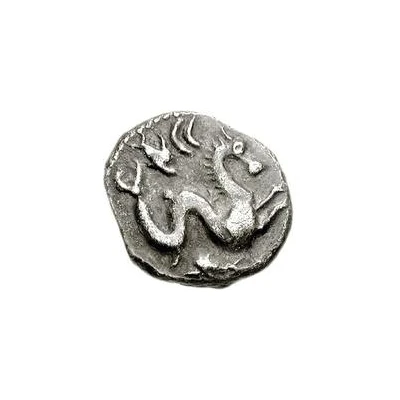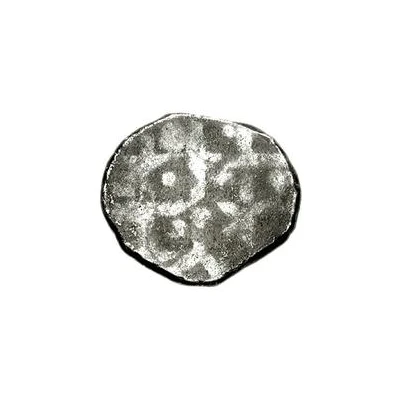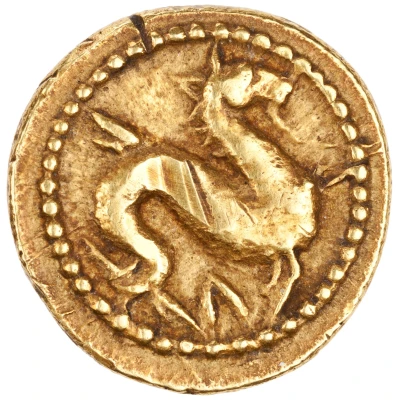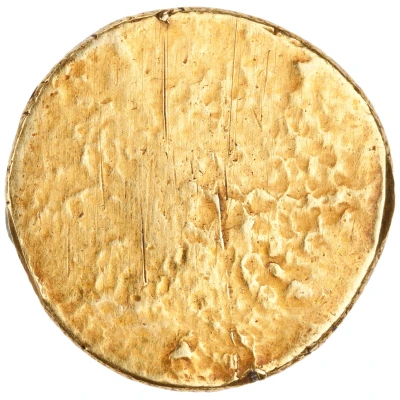Gold 12½ Asses 301 BC - 275 BC
| Gold | 0.75 g | 9 mm |
| Issuer | Luca (Etruria) |
|---|---|
| Type | Standard circulation coin |
| Years | 301 BC - 275 BC |
| Value | 12½ Asses (12.5) |
| Currency | As (circa 325-275 BC) |
| Composition | Gold |
| Weight | 0.75 g |
| Diameter | 9 mm |
| Shape | Round (irregular) |
| Technique | Hammered |
| Demonetized | Yes |
| Updated | 2024-10-09 |
| Numista | N#179606 |
|---|---|
| Rarity index | 100% |
Reverse
Blank (uniface).
Edge
Plain
Comment
Only one example is known, which was found at Vetulonia.These coins were originally attributed to Populonia, then Vetulonia, but do to similarities to the coins of Luca, it was probably meant for that place.
Interesting fact
One interesting fact about the Gold 12½ Asses coin from Luca (Etruria) is that it was used as a form of currency in ancient Italy, specifically in the region of Etruria, which is now modern-day Tuscany. The coin was minted during the 3rd century BC and was made of gold, which was a valuable and coveted metal at the time. The coin's design features the image of a lion, which was a symbol of power and strength in ancient Etruscan culture. Despite its age, the coin remains a valuable piece of history and a testament to the advanced economic systems of ancient civilizations.



